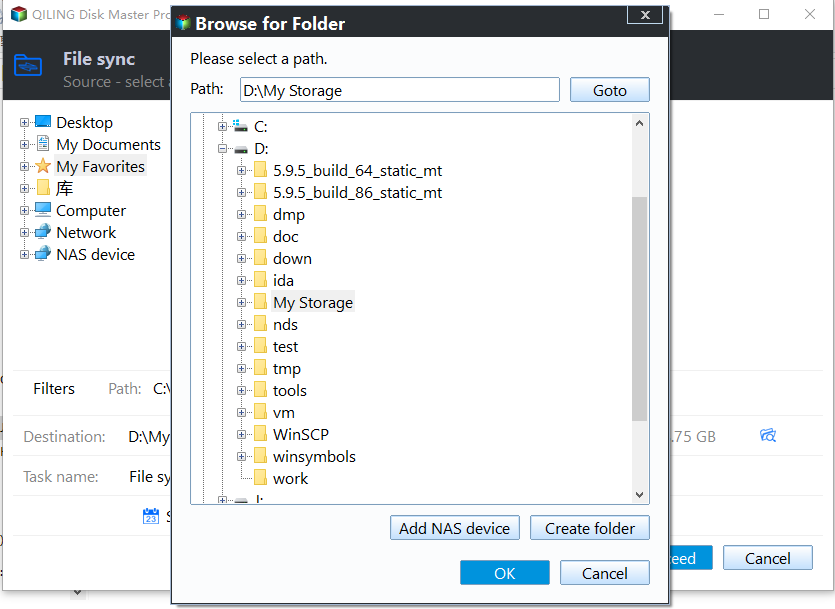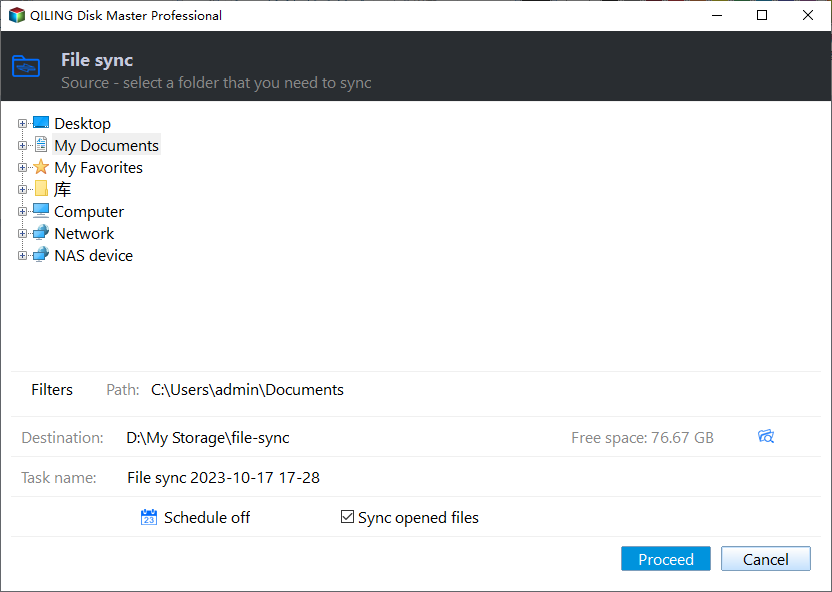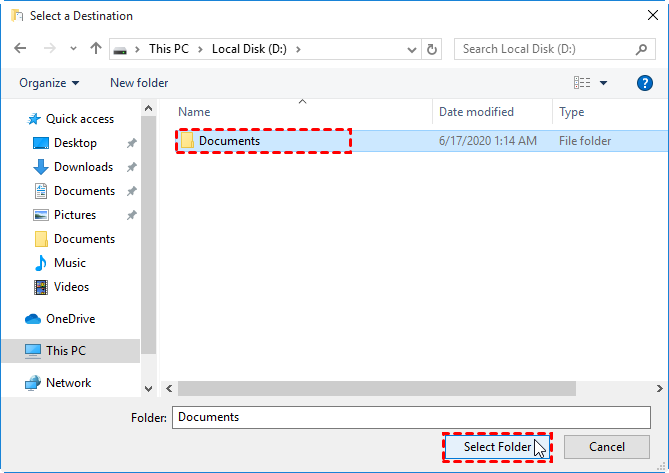Easily Move User Profile to Another Drive in Windows 10, 11
Why to move user profile to another drive?
A user profile is a record of user-specific data that define the user's working environment. The record can include display settings, application settings, and network connections. Different versions of Windows store user profile information in a specific directory with different names: "Documents and Settings" in Windows XP and "Users" in Windows Vista and later.
The user profile folder, located in the "Documents and Settings" or "Users" directory, is usually stored on the C drive. However, there may be situations where you need to move this folder to a different location. Here are some scenarios where you might find it necessary to relocate the user profile:
- The computer has less free space and runs slower: As you continue to use your computer, more and more user profiles are created, taking up valuable space on your C drive. This can lead to a significant decrease in free space, causing your system to slow down and become less responsive. To address this issue, moving the user profile to a different drive can be a effective solution.
- Protect your personal data: In today's digital age, it's not uncommon to experience system failures or need to reinstall your operating system due to virus attacks, software issues, or human errors. However, by migrating your user profile to a new location, you can ensure the security and integrity of your personal data.
Then, what's the easiest way to change user folder location?
How to move user profile to another drive in Windows 10/11 step by step
Are you looking for a way to free up space on your current drive or ensure the security of your personal data? Moving your user profile to another drive is a great solution.
- Are you looking for a simple and efficient way to move your Users folder to another drive? Look no further!
- Are you looking for a simple and efficient way to move your User folder from the C drive to the D drive? You can use a built-in Windows feature called "Drive C to D" (not an actual feature, but I'll explain how to do it) to achieve this.
Solution 1: move users folder to another drive via a powerful freeware
Are you looking for a hassle-free way to move your user profile to a new location? Qiling Disk Master Standard, a top-rated free file sync software, can make this process a breeze.
- Qiling Disk Master Standard is a powerful file sync tool that allows you to synchronize files between two folders, drives, or even two computers. With its user-friendly interface and robust features, you can easily keep your files up-to-date and ensure that your data is always accessible.
- In addition to syncing files between local folders, drives, and computers, Qiling Disk Master Standard also allows you to sync local folders to popular cloud storage services and NAS devices. This feature enables you to access your files from anywhere, at any time, and ensures that your data is always up-to-date and synchronized across multiple locations.
- Streamline your file management process with Qiling Disk Master Standard, which allows you to sync multiple folders simultaneously. This feature saves you from the tedious task of manually syncing each folder individually, making it easier to manage your files and keep them up-to-date.
Are you looking to free up space on your primary drive by moving the (My) Documents folder to another drive? Qiling Disk Master is here to help! With its user-friendly interface and powerful features, you can easily relocate the (My) Documents folder to another drive in Windows 10.
1. Getting started with Qiling Disk Master is a breeze! Simply download the software and follow the intuitive installation wizard to complete the process in no time.
2. To access the file sync feature, simply navigate to the tab page and click on the "Backup and recovery" option. From there, select the "File Sync" feature to get started.
3. To create a new sync task, click on the "Folder" option to select the Documents folder as the source for synchronization.
4. Select a destination location to store the folder.
5. Click on "Proceed" button to perform the operation.
>> Options: To further refine your sync task, you can add a comment to specify the contents being synchronized. This will help you and others quickly understand the purpose and scope of the task.
>> Schedule Sync: you can set the sync task to run periodically. There are five modes supported: Daily, Weekly, Monthly, Event triggers, and USB plug in.
6. To confirm that the sync process was successful, check the Documents folder in the destination. You can obtain detailed information about the folder by right-clicking it and selecting **Properties**. This will display the folder's size and the number of files it contains.
● If you delete the original Documents folder of the C drive, the synchronization task will be invalid. That is, the task can no longer run.
● If you want to sync the Desktop, Downloads, Music and Pictures folders at the same time, repeat clicking "Folder" in Step 3.
Solution 2: move user folder from C to D with Windows built-in feature
In addition to the manual process, Windows 10 offers a built-in feature to assist with user profile transfer. This feature can be particularly useful when transferring the Documents folder.
1. Create a new folder named Documents at the target drive.
2. Navigate to This PC > Local Disk (C:) > Users > User Name.
Tips: You can also find the user folder you want to move at the "Quick access" section. This is an alternative location where you can easily access frequently used files and folders.
3. Right click on the Documents folder and select Properties. Click on the Location tab, and then click Move.
4. Select the newly-created Documents folder on the target drive, and click Select Folder. Then, click OK at the Documents Properties window.
5. When prompted, confirm the move by clicking the "Yes" button.
6. Close File Explorer.
Summary
If you want to move your user profile to another drive, you have two reliable solutions. These methods not only work for Windows 10/11, but also for Windows 7, when changing the user folder location.
In addition to its file sync feature, Qiling Disk Master offers a backup and recovery function. Once you've determined what to backup before reinstalling Windows 10, you can use this feature to complete the backup task. The tool also makes it easy to �anage backups in Windows 10. Try it out now! If you find it helpful, share this page with your friends.manage backups in Windows 10. Try it out now! If you find it helpful, share this page with your friends.
Related Articles
- Backup User Profile Windows 10 and Move it to Another Computer
You will learn how to backup and restore user profile in Windows 10/11, without spending hours customizing the new computer. - Migrate User Profile to New Computer with Best Software
You will get 3 Windows 10 profile migration tools and stepwise guide to migrating user profile to new computers. - Move Users Folder to Another Drive in Windows Server 2012
Want to move Users folder to another drive in Windows Server 2012 (R2)/2016/2019/2022? The best Windows Server backup software – Qiling Disk Master Server and a Windows built-in feature can give you a hand. - How to Automatically Copy Files from One Folder to Another Easily
This page presents how to auto copy files from one folder to another in Windows 11, 10, 8, 7, XP, Vista and provides you with 2 helpful ways.






